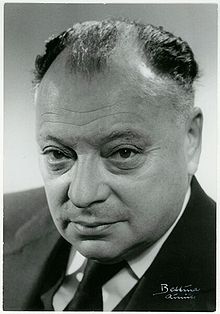
A quote from the cover story in the May 2015 issue of Harper's.
As early as the 1930s, scientists knew that in the process of radioactive decay, an atom's nucleus will release an electron. They were puzzled, though, by variations in the electron's energy level. The law of conservation of energy dictates a mathematical tidiness, whereby all such differences had to be accounted for. The Swiss physicist Wolfgang Pauli suggested a solution: Perhaps the electron was accompanied by an undetected 'ghost particle' which was more energetic when the electron was less so, and vice versa. The particle came to be called the neutrino, or 'little neutral one.' Pauli thought it might never be detected because it would hardly react with matter.
That is Pauli's visage above.
Comments
Post a Comment